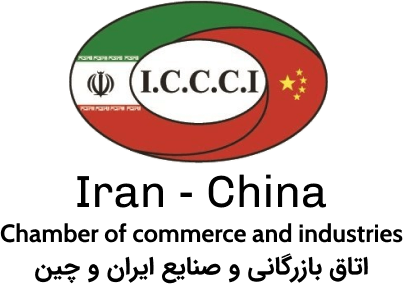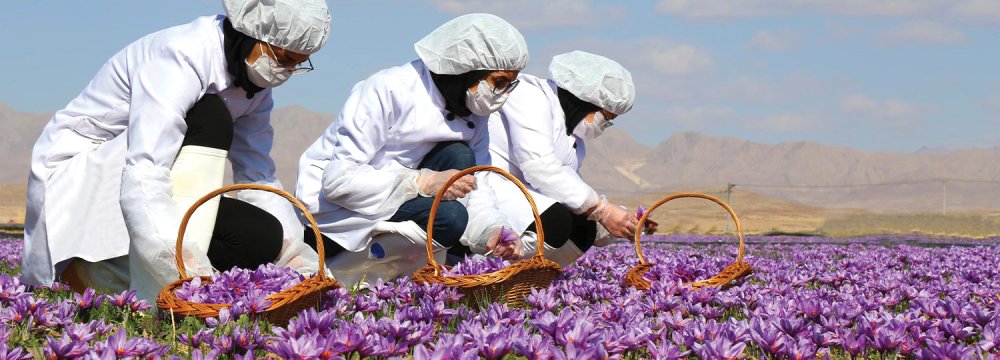Atotal of $65.71 million worth of saffron were exported from Iran during the first six months of the current Iranian year (March 21-Sept. 22), a member of Iran National Saffron Council’s Board of Directors.
Iran exports saffron to 65 countries, the vice president of the Association of Saffron Producers and Exporters of South Khorasan said.
“Iran is the producer of the best saffron in the world,” Ali Hosseini was also quoted as saying by Mehr News Agency.
Noting that the cultivation of saffron in Iran dates back to more than 3,000 years ago, the official said the precious spice has applications in pharmaceutical, food and beverages, and cosmetics industries.
Referring to Iran’s recent contract with Qatar for the export of saffron, Hosseini said the first consignment was shipped a few days ago.
The world’s biggest contract for saffron trade was signed between Iran and Qatar on Sept. 18, in the presence of Iran’s Ambassador in Doha Hamidreza Dehqani Poudeh and Qatar’s Finance Minister Ali bin Ahmed Al Kuwari.
Based on the contract, 200 tons of saffron worth around $300 million will be processed and exported from Iran to the neighboring Qatar.
Experts believe this contract is one of a kind and can have a positive impact on Iran’s saffron market and help export processed instead of raw saffron, creating value added for the precious Iranian spice.
Iran produces over 90% of all saffron harvested in the world, 80% of which are exported. However, the share of Iran in the global trade of saffron is disproportionately low, as many customers of the Iranian spice buy it in bulk and reexport after packaging it to third countries.
The Iranian saffron industry employs 200,000 people along the pre-harvest, harvest, post-harvest, processing, sorting and packaging chains. The livelihood of these people, farmers in particular, mainly depends on exports.
Iran’s area under saffron cultivation exceeds 115,000 hectares, which is 20 times higher than the total land dedicated to growing saffron in the whole world. He said Iran is annually increasing the area by 5,000 hectares.
The city of Torbat-e Heydariyeh in Khorasan Razavi is considered the capital of saffron in the world.
Besides Khorasan Razavi, North Khorasan, South Khorasan provinces – the main hub of saffron production in Iran, saffron is also cultivated in Chaharmahal-Bakhtiari and Khuzestan provinces.
Per capita consumption of saffron in Iran has been put at 1 gram. Annually, 80 tons of saffron are consumed domestically. However, Gholamreza Miri, the deputy head of Iran National Saffron Council, says local demand for saffron has dropped by 70% following the outbreak of Covid-19 and the decline in wedding and funeral ceremonies, adding that saffron is no longer a priority in the food basket of Iranian households.
Saffron, the world’s costliest spice by weight, is derived from the flower of Crocus sativus, commonly known as the “saffron crocus”. The vivid crimson stigma and styles, called threads, are collected and dried for use mainly as a seasoning and coloring agent in food.
Saffron is widely used in Persian cuisine for its distinct aroma, color and taste.
Drought Impact
Drought has led to a significant decline in Iran’s production and export of saffron — traditionally a major non-oil export commodity of the country.
Hosseini had earlier said Iran risks losing its major export destinations, in which it has had a foothold for decades now.
“Iran managed to overtake Spain as the world’s biggest saffron producer 30 years ago by producing high quality produce at a price lower than that of global markets,” he was quoted as saying by ILNA, adding that the neighboring countries are planning to take Iran’s place, as production costs are rising.
According to this official, a decline in precipitation, especially in major saffron producing provinces of South Khorasan, North Khorasan and Khorasan Razavi, has led to a 70% decline in production.
“We have been producing 450 tons of saffron per year, which figure has declined to 200 tons this year,” he was quoted as saying by IRNA.
Iran Chamber of Commerce, Industries, Mines and Agriculture has warned that drought could cripple Iran’s agricultural sector and hamper economic growth.
The Majlis Research Center says the provinces of Khorasan Razavi, Isfahan, Hormozgan, Sistan-Baluchestan, Ardabil, Fars and Markazi are facing a critical shortage of water.
Smuggling is Rife
For centuries, Iranian saffron growers had little problem exporting their “red gold”. Of late, however, the precious stigmas of the crocus sativus, renowned for reaching prices by weight higher than gold in their most sought-after forms, have become distinctly trickier for Iranian growers to sell, as US and European sanctions close traditional trade routes and mechanisms, reads an article published in iNews.
The result is an increasingly shady supply chain for the treasured ingredient – considered key to many dishes – beset by smuggling, counterfeiting and adulteration as Iranian growers and traders seek to reach a market increasingly preyed upon by fraudsters and criminal gangs.
From plant-based bulking agents such as safflower to the addition of illegal food dyes and even the production of fake threads using the strings from corn on the cob, the smuggling and faking of “red gold” has become a serious business.
An exporter based in Mashhad, a city in northeast Iran where the vast majority of saffron is grown, told iNews, “These are difficult times. Receiving payment from abroad is difficult, because banks do not allow trade. It allows space for corruption and criminals. We still produce the best saffron in the world but if you have to smuggle or use middlemen, then there are for sure ingredients for problems.”
Legitimate Iranian producers complain that large-scale smuggling of saffron – according to one estimate at least 10% of Iran’s crop are currently being sent clandestinely across the border to Afghanistan, which produces about 20 tons a year, from where it is sold as Afghan or Kashmiri saffron.
Ali Shariati, a spokesman for agriculture affairs at the Iranian chamber of commerce and the head of the country’s largest saffron processor, said, “The smuggling of any product harms the healthy commercial activity of the country because demand within the legal framework is transferred to this irregular sector and prices are reduced.”





